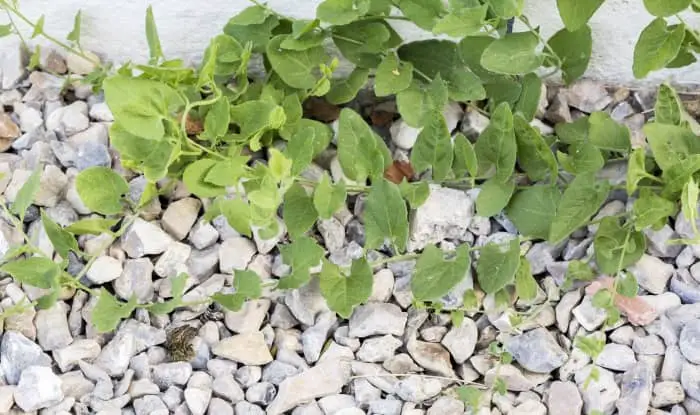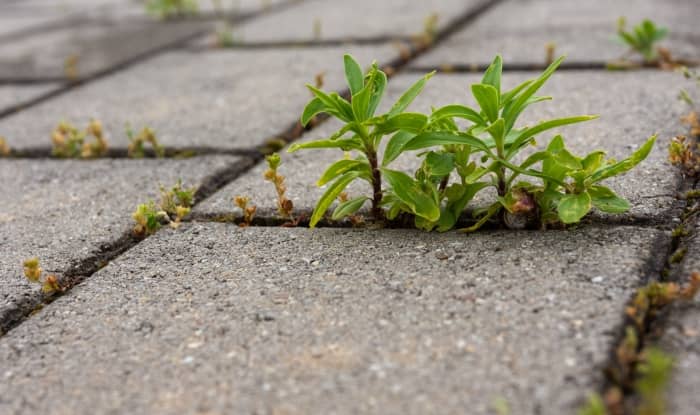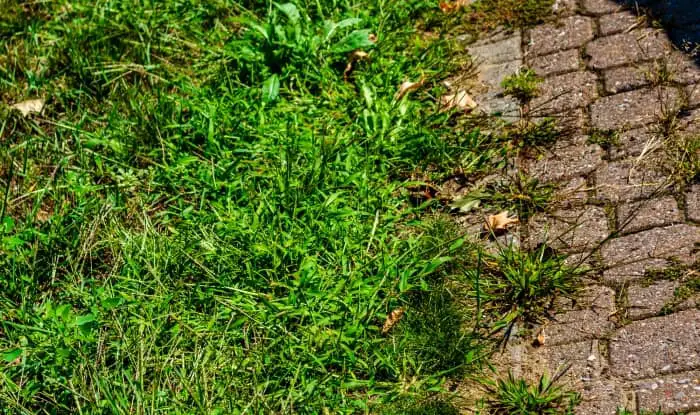When you spot those audacious green intruders growing in your garden, it’s time to take action. Whether you’re a seasoned horticulturist or a green thumb in training, weeds are a universal nuisance.
But what if you could evict these unwelcome guests without resorting to harsh chemicals or back-breaking manual methods?
Welcome to the world of killing weeds with steam, an innovative, eco-friendly tactic that’s revolutionizing the way we wage war on weeds. Let’s delve into this intriguing method, its benefits, and how you can incorporate it into your garden.
Understanding Steam Weed Control
So, what’s the deal with steam and weeds?
Steam weed control is a hot-wet method that eradicates weeds using a lethal cocktail of heat and moisture. How does this thermal weed control method work? Let’s break it down:
Cellular Damage: The Start of the End
When steam meets weed, it triggers a chain reaction that leads to the plant cells rupturing. Imagine popping a balloon – one moment it’s there, the next – poof! It’s gone. This cellular rupture causes immediate wilting and, ultimately, the weed’s demise. It’s a brutal yet effective process.
Protein Denaturation: Disrupting the Weed’s Function
But steam doesn’t stop at cellular damage. The high heat also causes the plant proteins to denature or alter. These proteins are fundamental to the plant’s structure and function. When they’re denatured, the plant can no longer function and ultimately dies.
Water Content Disruption: The Pressure Cooker Effect
Steam also manipulates the water content inside the weed. As the steam heats the internal water, it expands, creating a pressure build-up similar to a mini pressure cooker. The resulting pressure bursts the cells, delivering another fatal blow to the weed.
Cuticle Melting: The Dehydration Process
Plants have a protective layer called the cuticle, which helps retain water. But guess what can damage this cuticle? You guessed it – steam. This leads to rapid dehydration and, ultimately, plant death. It’s as if the weed is caught in a downpour without an umbrella – not the best scenario for the weed.
Seed Sterilization: Preventing Future Germination
One of the best things about steam weeding is that it doesn’t just kill existing weeds; it also sterilizes weed seeds in the soil (1). This halts future germination, ensuring your garden remains weed-free for longer. It’s like hitting two birds with one stone – or should we say, killing two weeds with one steam?
Root System Impact: The Limitations
Now, let’s not sugarcoat it; steam weeding does have its limitations. It predominantly affects shallow root systems, so deep-rooted weeds may require multiple treatments. But remember, Rome wasn’t built in a day, and neither is a weed-free garden.
So there you have it. The steamy truth about how steam kills weeds. It’s a bit scientific, but it’s also incredibly effective.
My first encounter with a steam weeder was unexpected. I borrowed my neighbor’s contraption, which looked more like a prop from a sci-fi movie than a gardening tool. But the results? Astounding. The machine heated the water to the optimal temperature and pressure, decimating the weeds in its path.
Benefits of Using Steam
Environmental Advantages
Using steam to kill weeds gets a big green thumbs-up. Firstly, it’s chemical-free. This means no harmful residues lingering in your garden’s soil or seeping into groundwater (2). Remember, what goes into the ground eventually winds up in our water systems.
But it gets even better. Unlike some herbicides, steam doesn’t contaminate the soil or harm beneficial microorganisms vital for a flourishing garden. Essential pollinators like bees and butterflies are also safe from any harm.
Did you know that some weeds can develop resistance to chemical herbicides? Well, they can. But guess what they can’t outsmart? The heat from steam. Plus, if you’re all for environmental sustainability, then steam can reduce your carbon footprint, especially if you’re using machines powered by renewable energy sources.
One of my favorite things about using steam for weed control is its water conservation. The efficient machines use minimal water to produce steam. With no harmful runoffs, we’re also safeguarding our aquatic life by preventing contamination of nearby water bodies.
Steam On All Surfaces
Another thing I love about steam is its adaptability. It can conquer different terrains and easily infiltrate cracks in pavers and bricks. Unlike flame weeding, it doesn’t ignite garden debris and is safe on hard surfaces. Talk about versatility!
Beats Plant Adaptation
You know those tenacious weeds that seem to have gained immunity against every trick in the book? Well, steam has the upper hand here. Hot water is effective against a vast spectrum of plant species, regardless of their adaptation. So, stubborn weeds, it’s time to say goodbye!
Safe For Human Health
When using steam there’s no risk of fire or exposure to harmful substances. That’s a win-win in my book!
Effective On A Variety Of Weeds
Steam weed control is effective on annual weeds and even some deep-rooted perennials. But what about those stubborn, deep-rooted weeds? Well, there are methods like deep soil steaming that aim to penetrate deeper into the ground. This could be a game-changer against those obstinate, deep-rooted weeds.
How to Use Steam to Kill Weeds
You can get professional steam weeding machines (3) that come with clear instructions for how to use the product effectively. But what if you want to use the steam cleaner you have at home?
Here’s a step-by-step guide on how to use a steam cleaner to kill weeds:
1. Preparing your Weapon: The Steam Cleaner
Preparing your steam cleaner is as simple as making a hot cup of coffee in the morning. Fill it with water and let it heat up for around 10 minutes. Your steam cleaner should also come with various attachments, making it easy to deliver the steam right where you want it.
2. Choose Your Weapon Wisely: The Right Attachment
Choosing the right attachment for your steam cleaner is crucial. If you’re targeting individual weeds, use an attachment that emits steam in a precise, small stream. For larger areas of weeds, you might want to attach a triangular brush. It’s all about picking the right tool for the right weed.
3. It’s Showtime: Applying Steam to Weeds
Now comes the fun part. Place the applicator over an individual weed for about eight seconds or slowly move the wand over a large area of weeds.
4. Patience is a Virtue: Repeat and Wait
Next, repeat this process in all weedy areas. A few hours after steaming, the weeds should start to wilt. You might need to repeat the steaming on the fourth day, just to get any weeds you missed and give an extra dose to the bigger ones.
5. The Final Countdown: Waiting for Results
By Day Five, those weeds should be toast. Literally. And what a glorious sight that will be! So there you have it, a step-by-step guide to getting rid of weeds using a steam cleaner.
Safety Considerations
While steam weeding is an eco-friendly alternative to chemical herbicides, it does come with its own set of safety considerations. Here are some safety considerations to keep in mind:
Burn Risk: Not Just for Sunflowers
Steam weeding machines can pump out some seriously hot stuff, so you want to ensure you’re well-protected. Keep your legs and feet covered and wear a pair of sturdy gloves.
Handling Equipment: It’s Not a Toy
Steam weeding machines can be quite heavy. Take your time to understand how to operate these machines safely.
Slippery When Wet: The Unexpected Ice Rink
Steam leaves behind moisture, which can turn your yard into a slip ‘n slide. Be mindful of where you’ve already steamed.
Electrical Safety: Zap!
If you’re using an electrically powered steam weeder, remember that water and electricity don’t mix well. Always check the condition of your machine’s electrical components before starting. And remember, steaming on a wet day might not be the best idea.
Noise: More than Just the Birds Chirping
Some steam weeders can be quite loud. If you have close neighbors, be mindful of what time of day you start weeding.
The Drawbacks
Like any method, steam weed control does have a few drawbacks.
The High Cost
Firstly, it can be pretty costly. Steam treatments sometimes require hiring trained professionals and investing in specialized equipment. Plus, steam treatments typically require about twelve applications per year to ensure effective weed control.
Questioning the Effectiveness
After the initial excitement wore off, I noticed a few shortcomings. For starters, steam experiences rapid cooling. This means by the time it reaches the pesky roots, it might not be hot enough to do the job.
Furthermore, steam doesn’t penetrate the ground deeply. This shallow reach could mean inadequate control of perennial species, leading to slower operational speeds.
Limited Versatility
Finally, the versatility, or lack thereof. While it’s effective for killing weeds, algae, and moss, it doesn’t have the multitasking abilities of other herbicide alternatives. For example, hot foam not only combats weeds but also handles urban cleaning tasks like graffiti and gum removal.
So, there you have it! The not-so-rosy side of killing weeds with steam. It’s important to weigh the benefits and drawbacks before diving into a new gardening method. In the end, we all want the same thing – a garden that has more blooms than weeds. Happy gardening!
References:
- A Steaming Method For Killing Weed Seeds Produced In The Current Year Under Untilled Conditions – https://www.sciencedirect.com/science/article/abs/pii/S0261219415000654
- Steam Your Weeds Right Out Of Existence – https://pacificbayequipment.com/steam-your-weeds-right-out-of-existence/
- Machine Controls Weeds With Steam – https://www.producer.com/crops/machine-controls-weeds-with-steam/





